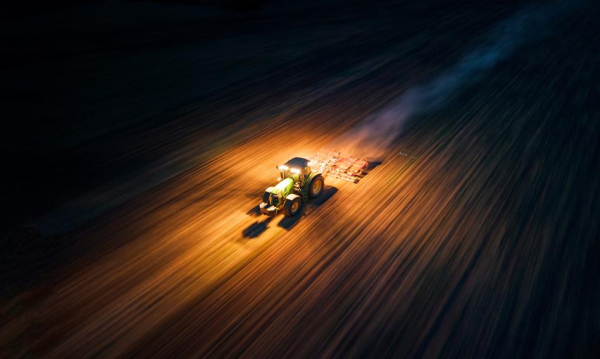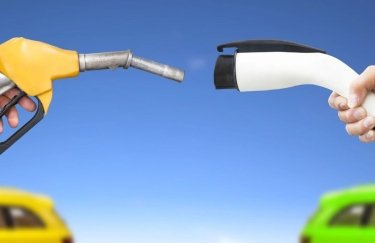Artificial intelligence algorithms are now used for things like analyzing plant images, forecasting yields, and automatically controlling machinery. AI supports agricultural production on many levels—from sowing to harvesting and even sales. It also helps reduce costs and adapt to climate change. Therefore, although new technologies are currently primarily used by the largest farm owners in Poland, the scale of AI use is growing rapidly.

“Neural modeling is becoming increasingly widespread in the agricultural industry, but we're not yet fully utilizing the potential of this technology. Currently, it's still in its infancy—we have companies implementing technology on mobile devices, touchscreens, and in tractors that supports farmers' daily work. However, we haven't yet reached the stage of everyday use,” says Prof. Maciej Zaborowicz, PhD, DSc, Eng., head of the Department of Biosystems Engineering at the Poznań University of Life Sciences, in an interview with the Newseria agency.
In Poland, according to the National Centre for Research and Development in its report “Agriculture 4.0. Identification of technological trends,” citing a study conducted by the University of Agriculture in Krakow in cooperation with Microsoft (Startup Poland, 2020), Polish farmers are showing growing interest in Agriculture 4.0 technologies. This applies in particular to solutions that improve fertilization efficiency (72%), modern devices for mechanical weed control (54%), soil cultivation support systems (48%), automatic machine guidance (54%), and telemetry (48%).
However, the benefits of using AI are many more, and automation on farms brings tangible benefits. Thanks to machine learning algorithms, farmers can make better decisions, optimize costs, and protect the environment. Artificial intelligence allows for faster reduction of fertilizer use, automated harvesting, and detection of plant diseases.
A study published in the journal Computers and Electronics in Agriculture demonstrated the ability of an artificial intelligence system to detect apple diseases. Using a neural network trained on a dataset of apple leaf images, the system achieved an impressive 95% accuracy in identifying the presence of the disease. Another practical example is the detection of yellow rust in wheat crops. The researchers used machine learning algorithms to analyze images of wheat fields, successfully identifying infected areas with high accuracy. This application of AI not only saves time but also minimizes losses, enabling early intervention.

“From the agricultural engineering and biosystems engineering perspective, when we talk about the application of artificial intelligence methods, it certainly involves field mapping, checking soil fertility, and determining optimal driving paths. We analyze satellite data, look for areas where yields are lower, where yields could be more even, and determine appropriate fertilization rates, and this is already happening today. When it comes to the application of artificial intelligence methods in food production, it certainly involves algorithms that support food production processes,” says an expert from the Poznań University of Life Sciences.
Artificial intelligence can significantly aid in assessing the quality of fruits and vegetables, both at the cultivation, harvesting, and processing stages. For example, computer vision systems with RGB and near-infrared (NIR) cameras are used to sort apples or tomatoes—AI classifies the fruit based on color, shape, and degree of ripeness. Algorithms based on sensors or satellite images help determine the optimal harvesting time, while near-infrared spectroscopy and hyperspectral imaging technologies allow for the assessment of sugar, acid, water, and starch content in fruits and vegetables.
– First, we need to obtain a set of appropriate parameters, a set of appropriate characteristics of the products we want to evaluate, enter them into such a system and create an appropriate model that will allow us to perform an additional objective assessment, untainted by the subjectivity of a given evaluator, and allow us to assess the quality of, for example, a tomato or the quality of meat – explains Prof. Maciej Zaborowicz.
A study by Prescient and Strategic Intelligence shows that the artificial intelligence market in agriculture was worth just over $2 billion in 2024 (compared to $1.6 billion in 2023). By 2030, this figure could reach nearly $8 billion. In Poland, according to a report by the National Centre for Research and Development (NCBiR), Agriculture 4.0 technologies are most frequently used by farm owners over 20 hectares (38.4% of respondents), 7.6% of respondents on farms between 2 and 20 hectares, and only 3.6% on even smaller farms (under 2 hectares).
“Young people are much more willing to invest in new solutions and use them. Sometimes they download artificial intelligence applications for testing, just to see how they work. As the average age increases, resistance to implementing these changes increases, but we've known this since the introduction of computers into agriculture. Today, no tractor operator can imagine working without a joystick or a handheld controller, but we must slowly move towards using new software such as artificial neural networks, machine learning, and computer science,” explains a researcher from the Poznań University of Life Sciences.
Artificial intelligence allows for significant cost reductions in agriculture. Intelligent systems that recognize plants apply pesticides only to weeds, reducing chemical costs. Smart irrigation systems can save up to 30-50% of water compared to traditional methods, while AI-guided machinery along optimal routes reduces fuel consumption. Therefore, according to the expert, their popularity will continue to grow.
“New technologies primarily reduce expenses, meaning they save money, because they act as advisory systems. This advisory means we can eliminate errors in planned processes, for example, optimize the transport process or the acquisition of a given material, and this in itself is an added value. The costs of acquiring technology have also dropped significantly; it's no longer as expensive as it used to be, so introducing such solutions to the market certainly supports even small farmers without significant investment and expense,” argues Prof. Maciej Zaborowicz, Ph.D., Eng.






